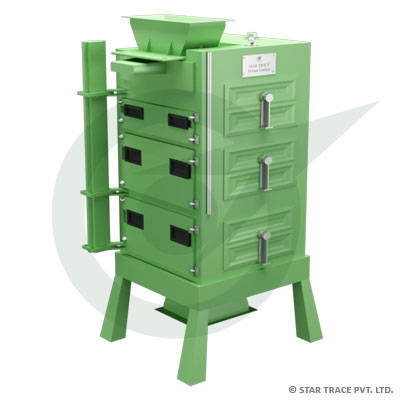Electrostatic Separator
The electrostatic separators are classified into two main types, such as electrodynamic separators or high tension roll separators and electrostatic plate and Screen separators. Both the separators work in similar ways, but the forces applied to the particles are different i.e. gravity and electrostatic attraction forces. In high tension rollers, the particles that subsequently travel on a drum are charged by a corona discharge. The conducting particles lose their charge to the drum and are removed from the drum with centripetal acceleration.The electrostatic plate separators work by passing a stream of particles past a charged anode. The conductors lose electrons to the plate and are pulled away from the other particles due to the induced attraction to the anode. These separators are used for particles between 75 and 250 micron and for efficient separation to occur, where the particles need to be dry, and have a close size distribution and uniform in shape. Of these considerations, one of the most important is the water content of the particles. This is important as a layer of moisture on the particles renders the non-conductors as conductors as the layer of the water is conductive.
Electrostatic plate separators are usually used for streams that have small conductors and coarse non-conductors. The high tension rollers are usually used for streams that have coarse conductors and fine non-conductors.
The plate separators used for separating mineral sands ie. zircon, rutile and ilmenite are separated from the silica gangue. The separation is performed in a number of stages with roughers, cleaners, scavengers and recleaners.
Applications- e-waste recycling plant.
- Beneficiation of ferrous, non -ferrous and rare metal ones.
- Recovery of metals from industrial wastes (electronic or electrical
- engineering scrap, cables etc.
- Recovery of dielectric materials (e. g. plastics) for recycling.
- Purification of metal and non -metal powders.
- Separation of industrial minerals (quarts, feldspar, mica etc.).
- Shape and size classification.

